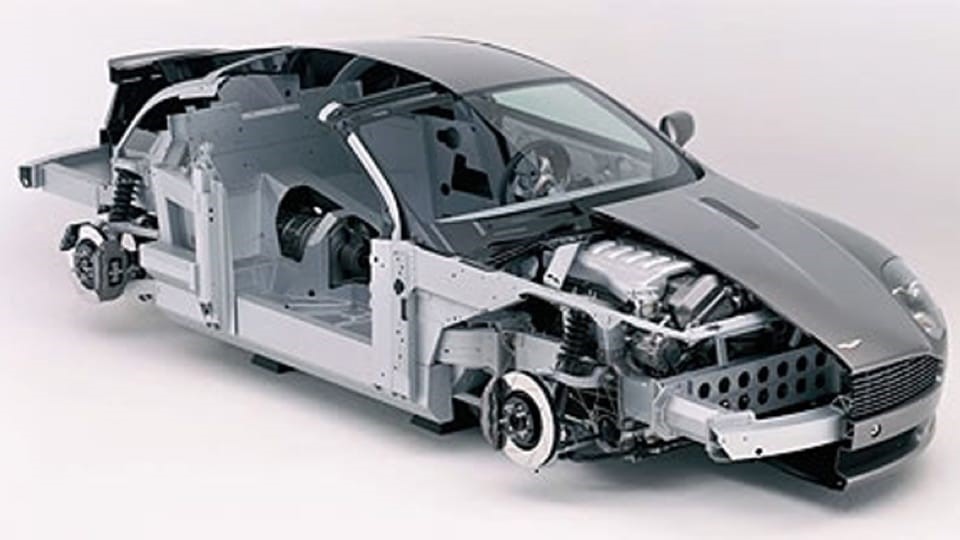

The new computer tool facilitates the production of car components, while the properties of the materials from which the car parts are made will be as the big car manufacturers want it to be.

The system can calculate stiffness, strength and stability and the calculations that used to take months can now be done away within a few days or weeks.
However, the car manufacturers have strict requirements for safe and precise production and to meet these requirements, subcontractors use computer-aided models for construction and simulation.
These are used to predict the product properties of the car parts during and after casting and during use.
Professor Geir Grasmo, Professor of construction materials at the University of Agder and has led a research project that has developed new modelling tools for the automotive industry, said: “We have developed and connected such tools in a way that makes it easier and faster to plan production and predict quality more precisely.”
Automated casting requires advanced simulations
The chassis parts of different car brands models have different shapes and different properties, like Jaguar has different requirements than BMW.
To be able to deliver from a high-cost country such as Norway, companies such as Aludyne Norway are investing in highly automated processes where production is tailored as needed. Then the preparation is decisive for the result.
Advanced computer tools simulate, among other things, the mixing ratio between aluminium, silicon, magnesium and other ingredients included in the casting. Furthermore, filling of the moulds and the solidification itself is simulated, where the moulds and the metal are cooled.
Grasmo said: “The chassis of a car must withstand a noise. It forms the foundation on which the rest of the car is built, and must withstand the heavy loads a vehicle is exposed to at speed on demanding surfaces.”
“The chassis must also be designed so that an injury is mitigated and as little as possible if the accident is out and the car ends up in a collision.”
“The chassis parts are cast in a process where metals and other substances are first fused in what are called alloys. These alloys must be just right ‘tough’. If they are too crazy, they can crack when affected by large forces. At the same time, they cannot be too tough or weak. Then they will bend.”
“We also want what is called ‘dead’ material that gives parts that do not vibrate too much. It's about comfort and noise in the car because materials without the right properties can give during while driving”, said Grasmo.
Predicts properties in the material
The main components of the alloys are usually aluminium. Properties such as brittleness, strength, tension and toughness in the finished car parts will be determined by how substances such as iron, magnesium and silicon are distributed in the alloy.
“For example, few and large silicon particles will make the material tough, but also soft. If the silicon is more finely divided, we get a different structure with more strength, but somewhat lower toughness”, said Grasmo.

According to the professor, the new model tools predict important properties in the finished cast parts. The system can calculate the ability of different car parts to hold its shape regardless of temperature.
The system contributes to controlling during casting of car parts. During cooling, the surface of a casting part cools faster than the core. In this phase, there is a risk that the material, which is castings in complicated shapes and different thicknesses, may solidify in the wrong shape.
“We have good control over how the properties can be optimized by controlling the solidification and subsequent heat treatment in production. It is not only the mixing ratio in the alloy that determines the quality, but also how fast the materials cool down.”
“Knowing how the alloy behaves when it goes from hot to cold is important”, he explains.
Looks out stresses in materials
The model tools also predict precisely how adjustments to the production process affect what is called the residual voltage in the finished car parts.
There should preferably be as little residual stress as possible because stress and deformations can cause the material to strike or twist uncontrollably when exposed to large forces.
“But the possible biggest negative effect of residual voltages may be that the service life of the part decreases. The material has less resistance to fatigue under the continuously varying load that we have on the chassis while driving, especially on bad roads”, said Geir Grasmo.
Better driving characteristics
Companies such as Aludyne Norway offer to the major car manufacturers based on detailed requirements specifications. They must document that they can make car parts that correspond 100% to all safety requirements - and all other specific wishes.
“Aludyne has used new tools with very good results. The simulations and the interaction between different programs go much faster than before and are more accurate. This means that the company can be involved in more tender processes than before. This is important in an industry where even good subcontractors usually do not win more than 5% to 10% of the tenders they participate in”, said Grasmo.
He also points to better driving characteristics, lower energy consumption and longer life as positive effects of better simulations.
Grasmo concluded by saying: “When two materials are to be cast together in this way, it is very important to have control over the transition between the two materials. They cannot fall apart while driving.”
Responses








